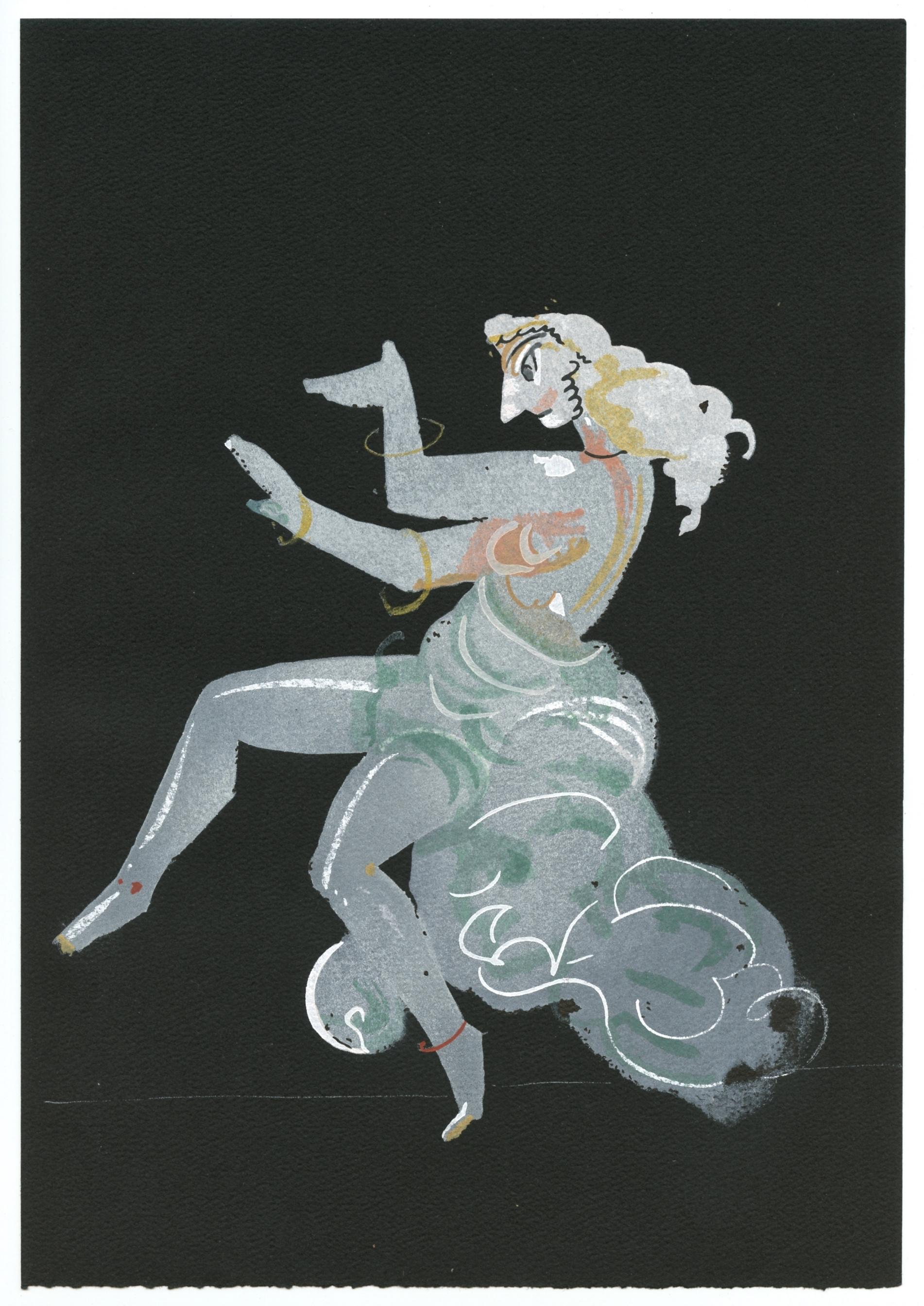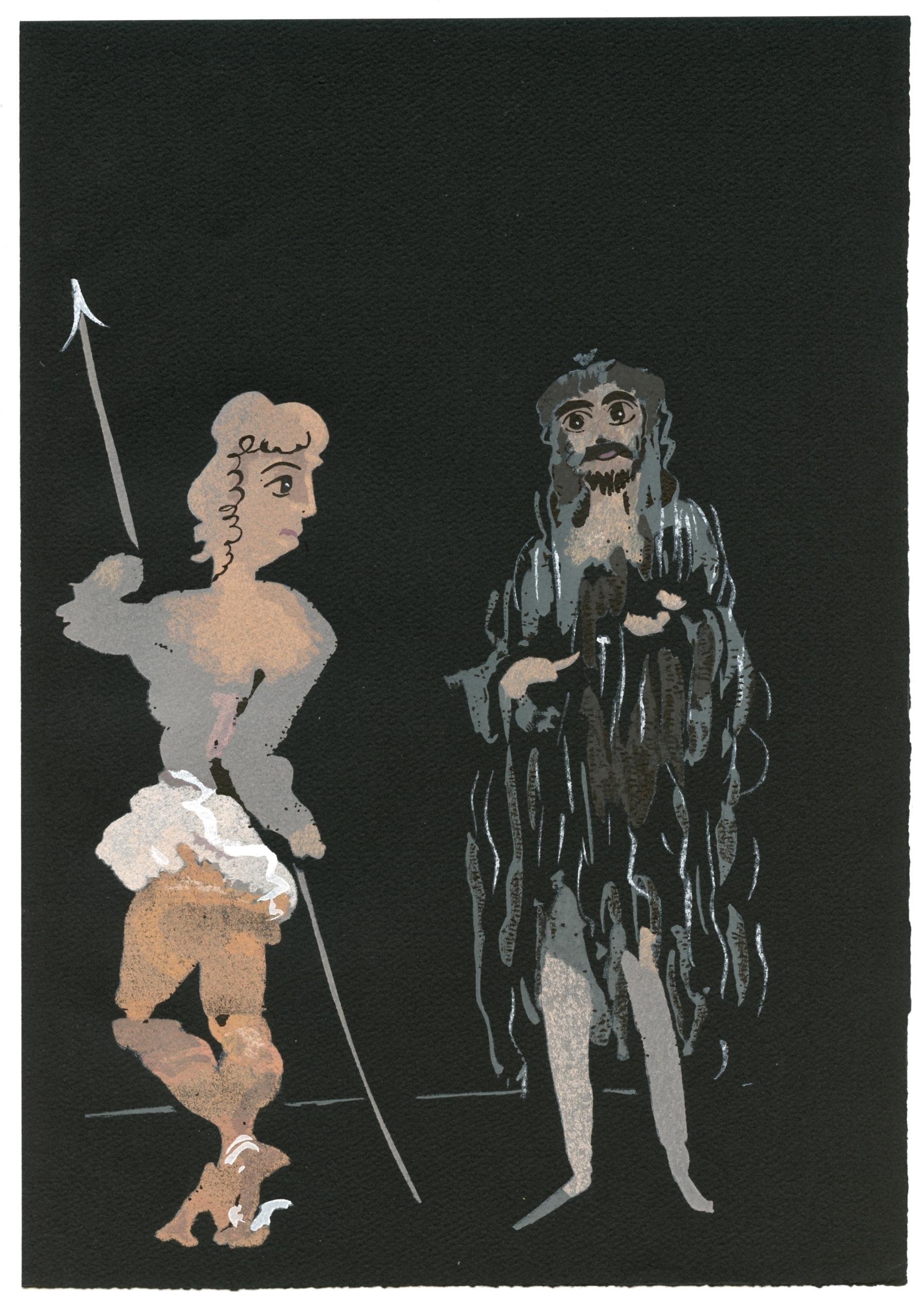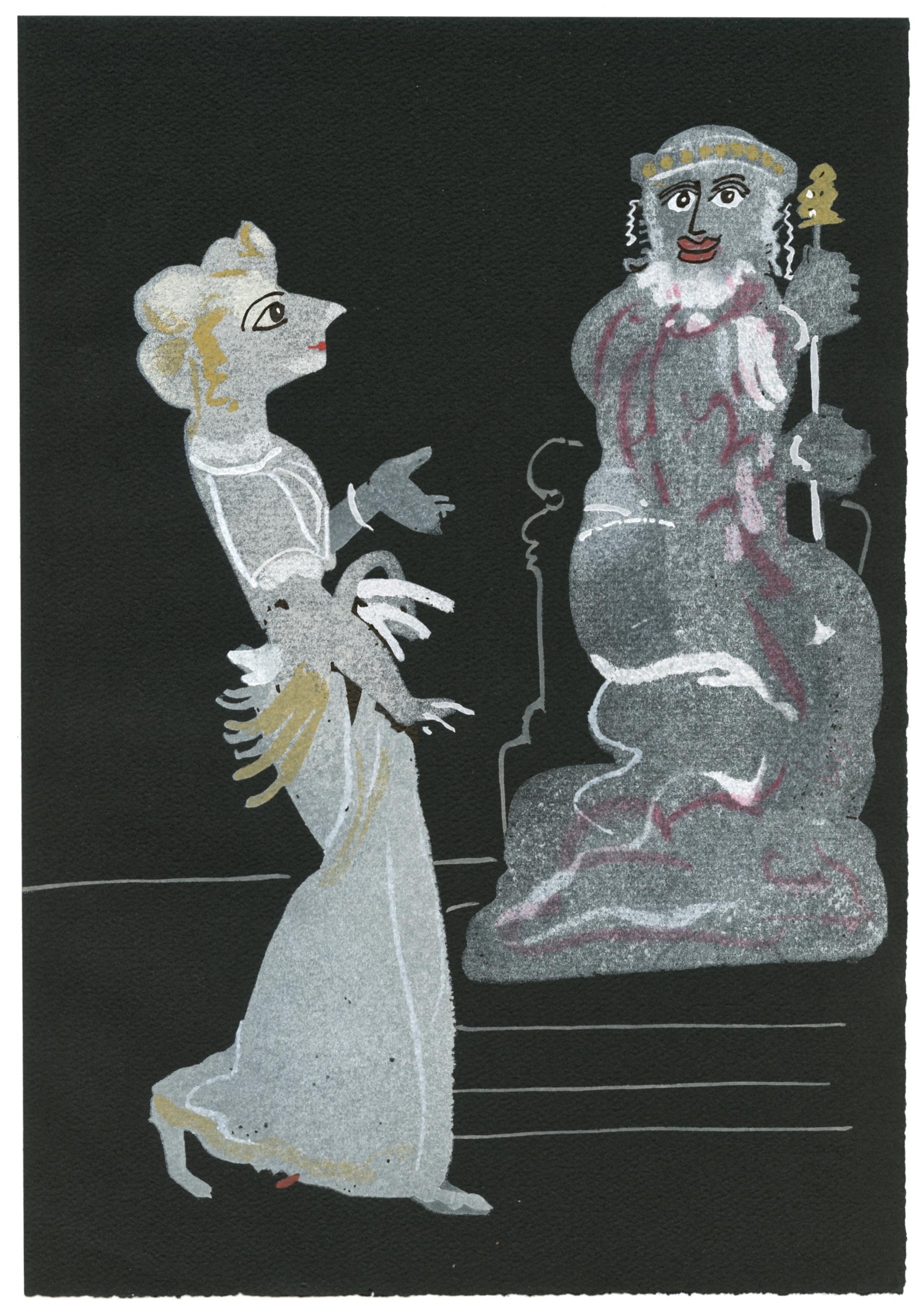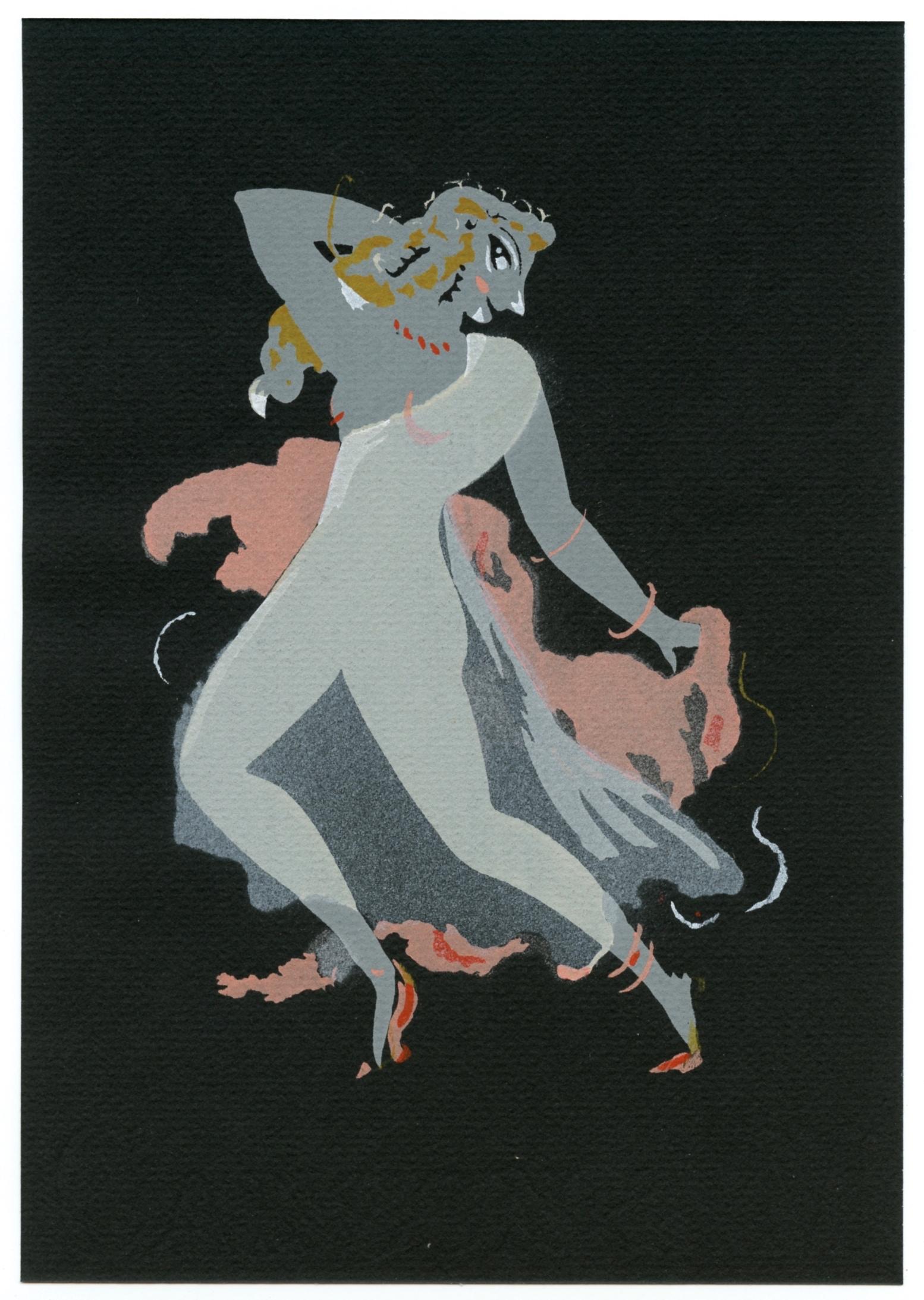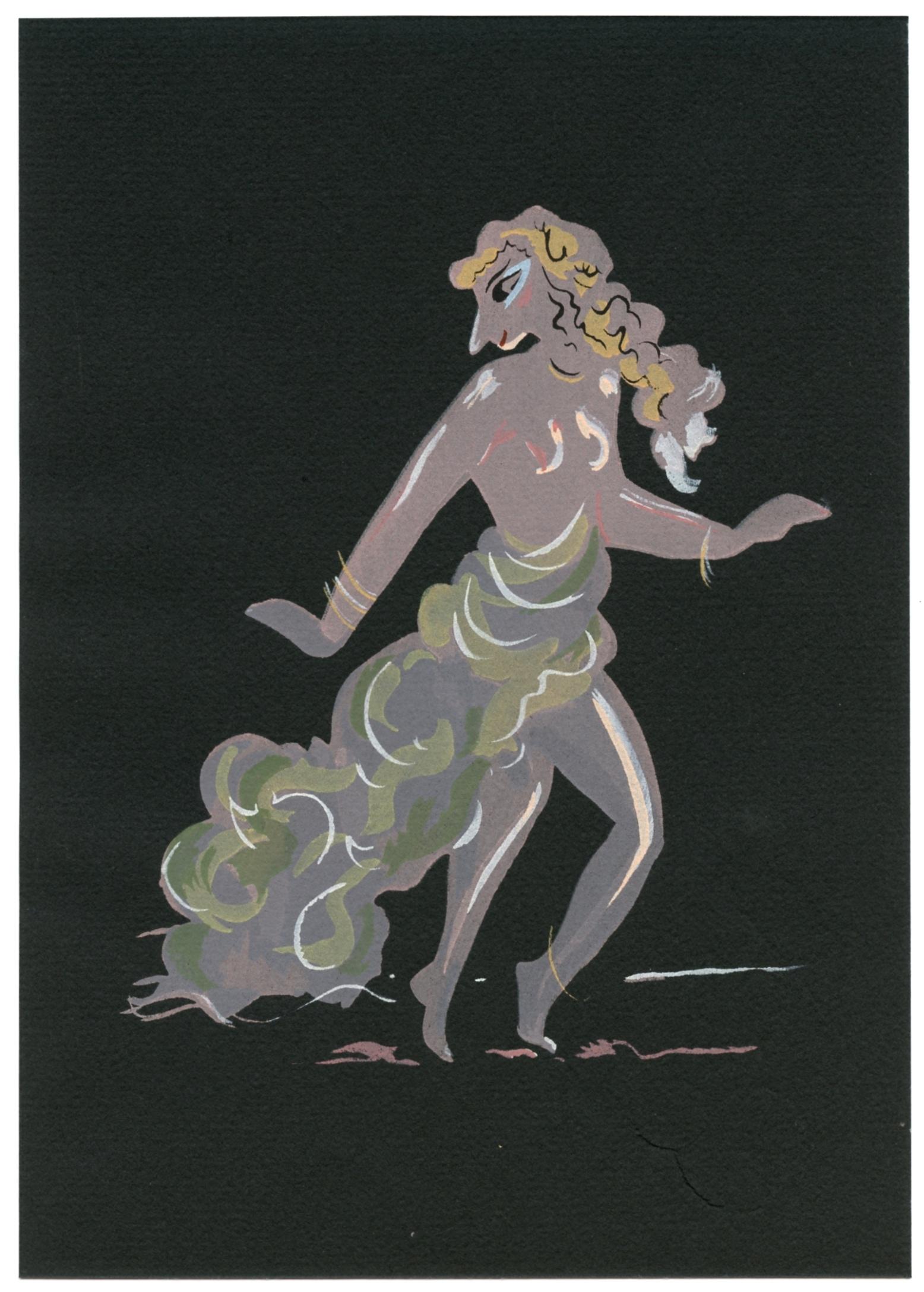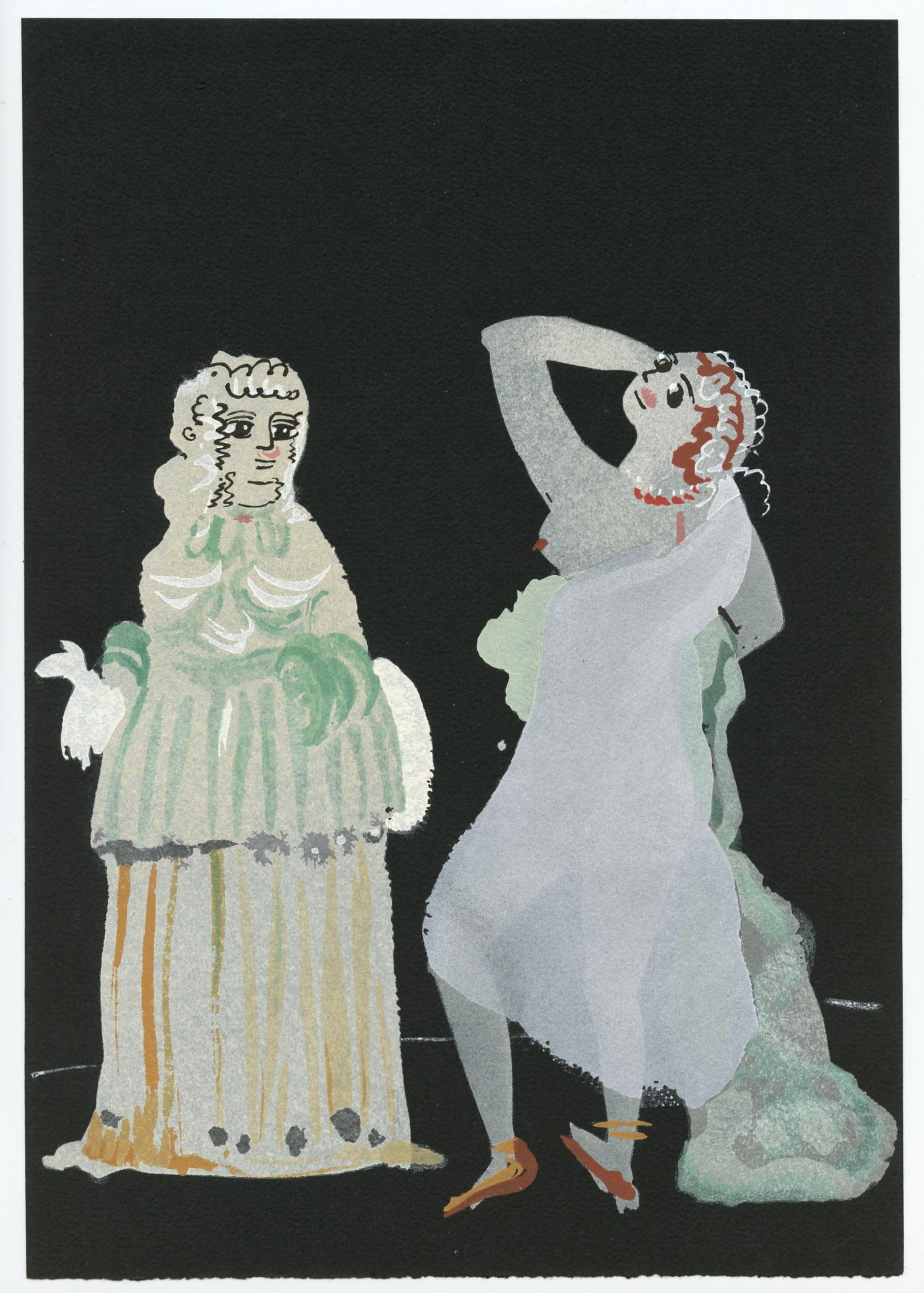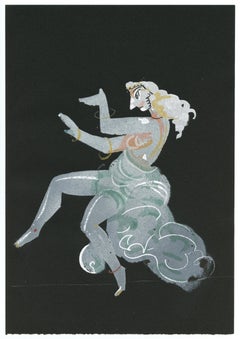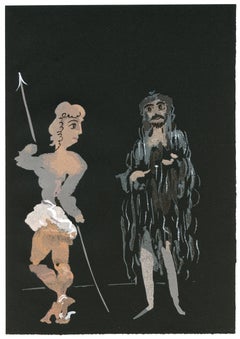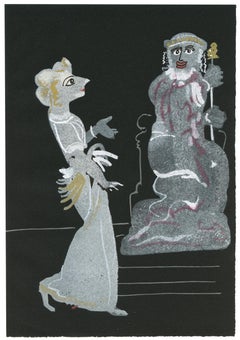Want more images or videos?
Request additional images or videos from the seller
1 of 2
(after) André Derain"Salomé" pochoir1955
1955
$75
£56.97
€65.61
CA$107.30
A$117.69
CHF 60.69
MX$1,405.72
NOK 769.73
SEK 722.09
DKK 490.27
About the Item
Medium: pochoir (after the gouache). This pochoir illustrates a scene from Oscar Wilde's "Salomé". It was printed in 1955 by l'Imprimerie Nationale de Monaco and published by Fermiers Generaux. Size: 8 x 5 1/2 inches (203 x 140 mm). A rich and beautiful impression on black Supralfa Cellunaf laid paper. Not signed.
- Creator:(after) André Derain (1880 - 1954, French)
- Creation Year:1955
- Dimensions:Height: 8 in (20.3 cm)Width: 5.52 in (14 cm)
- Medium:
- Movement & Style:
- Period:
- Condition:
- Gallery Location:Henderson, NV
- Reference Number:1stDibs: LU2365212967162
About the Seller
5.0
Platinum Seller
Premium sellers with a 4.7+ rating and 24-hour response times
Established in 2006
1stDibs seller since 2023
550 sales on 1stDibs
Typical response time: 1 hour
- ShippingRetrieving quote...Shipping from: Henderson, NV
- Return Policy
Authenticity Guarantee
In the unlikely event there’s an issue with an item’s authenticity, contact us within 1 year for a full refund. DetailsMoney-Back Guarantee
If your item is not as described, is damaged in transit, or does not arrive, contact us within 7 days for a full refund. Details24-Hour Cancellation
You have a 24-hour grace period in which to reconsider your purchase, with no questions asked.Vetted Professional Sellers
Our world-class sellers must adhere to strict standards for service and quality, maintaining the integrity of our listings.Price-Match Guarantee
If you find that a seller listed the same item for a lower price elsewhere, we’ll match it.Trusted Global Delivery
Our best-in-class carrier network provides specialized shipping options worldwide, including custom delivery.More From This Seller
View All"Salomé" pochoir
By (after) André Derain
Located in Henderson, NV
Medium: pochoir (after the gouache). This pochoir illustrates a scene from Oscar Wilde's "Salomé". It was printed in 1938 at the atelier Saudé of Paris and published by The Limited E...
Category
1930s Fauvist Prints and Multiples
Materials
Lithograph, Stencil
"Salomé" pochoir
By (after) André Derain
Located in Henderson, NV
Medium: pochoir (after the gouache). This pochoir illustrates a scene from Oscar Wilde's "Salomé". It was printed in 1938 at the atelier Saudé of Paris and published by The Limited E...
Category
1930s Fauvist Prints and Multiples
Materials
Stencil, Lithograph
"Salomé" pochoir
By (after) André Derain
Located in Henderson, NV
Medium: pochoir (after the gouache). This pochoir illustrates a scene from Oscar Wilde's "Salomé". It was printed in 1938 at the atelier Saudé of Paris and published by The Limited E...
Category
1930s Fauvist Prints and Multiples
Materials
Lithograph, Stencil
"Salomé" pochoir
By (after) André Derain
Located in Henderson, NV
Medium: pochoir (after the gouache). This pochoir illustrates a scene from Oscar Wilde's "Salomé". It was printed in 1955 by l'Imprimerie Nationale de Monaco and published by Fermier...
Category
1950s Fauvist Prints and Multiples
Materials
Stencil, Lithograph
"Salomé" pochoir
By (after) André Derain
Located in Henderson, NV
Medium: pochoir (after the gouache). This pochoir illustrates a scene from Oscar Wilde's "Salomé". It was printed in 1955 by l'Imprimerie Nationale de Monaco and published by Fermier...
Category
1950s Fauvist Prints and Multiples
Materials
Stencil, Lithograph
"Salomé" pochoir
By (after) André Derain
Located in Henderson, NV
Medium: pochoir (after the gouache). This pochoir illustrates a scene from Oscar Wilde's "Salomé". It was printed in 1938 at the atelier Saudé of Paris and published by The Limited E...
Category
1930s Fauvist Prints and Multiples
Materials
Lithograph, Stencil
You May Also Like
Etching from Le Satyricon
By André Derain
Located in Surfside, FL
This lot is for one etching.
---
Derain was born in 1880 in Chatou, Yvelines, Île-de-France, just outside Paris. In 1895 Derain began to study on his own, contrary to claims that mee...
Category
20th Century Figurative Prints
Materials
Etching
Figurative Etching from Le Satyricon
By André Derain
Located in Surfside, FL
This lot is for one etching.
---
Derain was born in 1880 in Chatou, Yvelines, Île-de-France, just outside Paris. In 1895 Derain began to study on his own, contrary to claims that mee...
Category
20th Century Figurative Prints
Materials
Etching
Etching from Le Satyricon
By André Derain
Located in Surfside, FL
This lot is for one etching.
---
Derain was born in 1880 in Chatou, Yvelines, Île-de-France, just outside Paris. In 1895 Derain began to study on his own, contrary to claims that mee...
Category
20th Century Figurative Prints
Materials
Etching
Etching from Le Satyricon
By André Derain
Located in Surfside, FL
This lot is for one etching.
---
Derain was born in 1880 in Chatou, Yvelines, Île-de-France, just outside Paris. In 1895 Derain began to study on his own, contrary to claims that mee...
Category
20th Century Figurative Prints
Materials
Etching
Etching from Le Satyricon
By André Derain
Located in Surfside, FL
This offering is for one etching.
---
Derain was born in 1880 in Chatou, Yvelines, Île-de-France, just outside Paris. In 1895 Derain began to study on his own, contrary to claims tha...
Category
20th Century Nude Prints
Materials
Etching
Etching from Le Satyricon
By André Derain
Located in Surfside, FL
This lot is for one etching.
---
Derain was born in 1880 in Chatou, Yvelines, Île-de-France, just outside Paris. In 1895 Derain began to study on his own, contrary to claims that mee...
Category
20th Century Figurative Prints
Materials
Etching
More Ways To Browse
Original Vintage Jazz Posters
Pablo Picasso Signed Lithograph
Peter Max Statue Of Liberty
Picasso 1956
Pop Art 2020
Robert Longo Men In Cities
Rodin Original
Santa Claus Vintage Art
Seamus Heaney
St John By Marie Gray Vintage
Tarot Art
Vintage Brooklyn Bridge Print
Warhol Mick Jagger
Whistler Lithograph
American Neon Sign
Andrew Wyeth Print
Andy Warhol Soup Prints
Andy Warhol Statue Of Liberty
